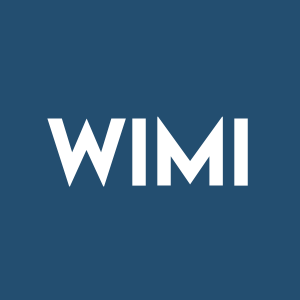WiMi Announced the Optimization of Artificial Neural Networks Using Group Intelligence Algorithm
Beijing, Dec. 20, 2023 (GLOBE NEWSWIRE) -- WiMi Hologram Cloud Inc. (NASDAQ: WIMI) ("WiMi" or the "Company"), a leading global Hologram Augmented Reality ("AR") Technology provider, today announced that it adopted a group intelligence algorithm to optimize the artificial neural network. This algorithm facilitates the process of determining the network structure and the training of the artificial neural network. The group intelligence algorithm is better at finding the optimal connection weights and biases during training compared to traditional algorithms.
The group intelligence algorithm is a meta-heuristic optimization algorithm inspired by observing the behavioral patterns of groups of animals and insects as their environment change. These algorithms use the simple collective behavior of certain groups of biological organisms to generate group intelligence. This allows group intelligence algorithms to solve complex optimization problems using the interaction between groups of artificial search agents and the environment. Group intelligence algorithms can solve different types of optimization problems, including continuous, discrete or multi-objective optimization problems. Therefore, they have a wide range of applications in various fields.
WiMi used a group intelligence algorithm to optimize artificial neural networks to improve the generalization ability of artificial neural networks by optimizing the connection weights, weights, and biases or network structure. The following are the steps of the algorithm:
Determine the structure and parameters of the neural network: Setting and adjusting the structure and parameters of the neural network according to the specific problem, such as the number of layers, the number of neurons in each layer, the activation of functions and so on.
Prepare the training dataset: Selecting an appropriate training dataset for training the neural network.
Initialize dataset: Randomly generating a set of solutions as potential solutions to the problem, representing the initial dataset. In the context of neural network optimization, this can include randomly generating a set of initial weights and bias values as initial solutions for the neural network.
Calculate the fitness: A fitness function is defined based on the nature of the problem and is used to evaluate the quality of each solution. In the context of neural network optimization, this can include calculating the error between the output of the network and the actual label as the fitness.
Search: Updating each solution in the population according to a certain update rule (e.g., an update rule based on modeling the movement step of swarming organisms, such as PSO, AFSA & SFLA) or an update rule set according to some algorithmic mechanism (e.g., ACO). The fitness and stochastic factors of each solution are considered in the update to improve the search efficiency.
Termination conditions: Ensuring that the process satisfies certain termination conditions, such as reaching a preset maximum number of times or finding a satisfying solution.
Testing and evaluation: Testing and evaluating the optimized neural network using a test dataset to verify its performance and generalization ability.
The group intelligence optimization algorithm is a probabilistic stochastic search method, so the optimization result obtained is not necessarily the optimal solution, but usually a better solution. In addition, WiMi will incorporate other techniques such as feature selection and data pre-processing to further improve the performance and generalization of the neural network.
About WIMI Hologram Cloud
WIMI Hologram Cloud, Inc. (NASDAQ:WIMI) is a holographic cloud comprehensive technical solution provider that focuses on professional areas including holographic AR automotive HUD software, 3D holographic pulse LiDAR, head-mounted light field holographic equipment, holographic semiconductor, holographic cloud software, holographic car navigation and others. Its services and holographic AR technologies include holographic AR automotive application, 3D holographic pulse LiDAR technology, holographic vision semiconductor technology, holographic software development, holographic AR advertising technology, holographic AR entertainment technology, holographic ARSDK payment, interactive holographic communication and other holographic AR technologies.
Safe Harbor Statements
This press release contains "forward-looking statements" within the Private Securities Litigation Reform Act of 1995. These forward-looking statements can be identified by terminology such as "will," "expects," "anticipates," "future," "intends," "plans," "believes," "estimates," and similar statements. Statements that are not historical facts, including statements about the Company's beliefs and expectations, are forward-looking statements. Among other things, the business outlook and quotations from management in this press release and the Company's strategic and operational plans contain forward−looking statements. The Company may also make written or oral forward−looking statements in its periodic reports to the US Securities and Exchange Commission ("SEC") on Forms 20−F and 6−K, in its annual report to shareholders, in press releases, and other written materials, and in oral statements made by its officers, directors or employees to third parties. Forward-looking statements involve inherent risks and uncertainties. Several factors could cause actual results to differ materially from those contained in any forward−looking statement, including but not limited to the following: the Company's goals and strategies; the Company's future business development, financial condition, and results of operations; the expected growth of the AR holographic industry; and the Company's expectations regarding demand for and market acceptance of its products and services.
Further information regarding these and other risks is included in the Company's annual report on Form 20-F and the current report on Form 6-K and other documents filed with the SEC. All information provided in this press release is as of the date of this press release. The Company does not undertake any obligation to update any forward-looking statement except as required under applicable laws.
Contacts
WIMI Hologram Cloud Inc.
Email: pr@wimiar.com
TEL: 010-53384913
ICR, LLC
Robin Yang
Tel: +1 (646) 975-9495
Email: wimi@icrinc.com








